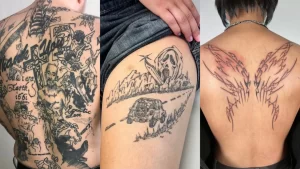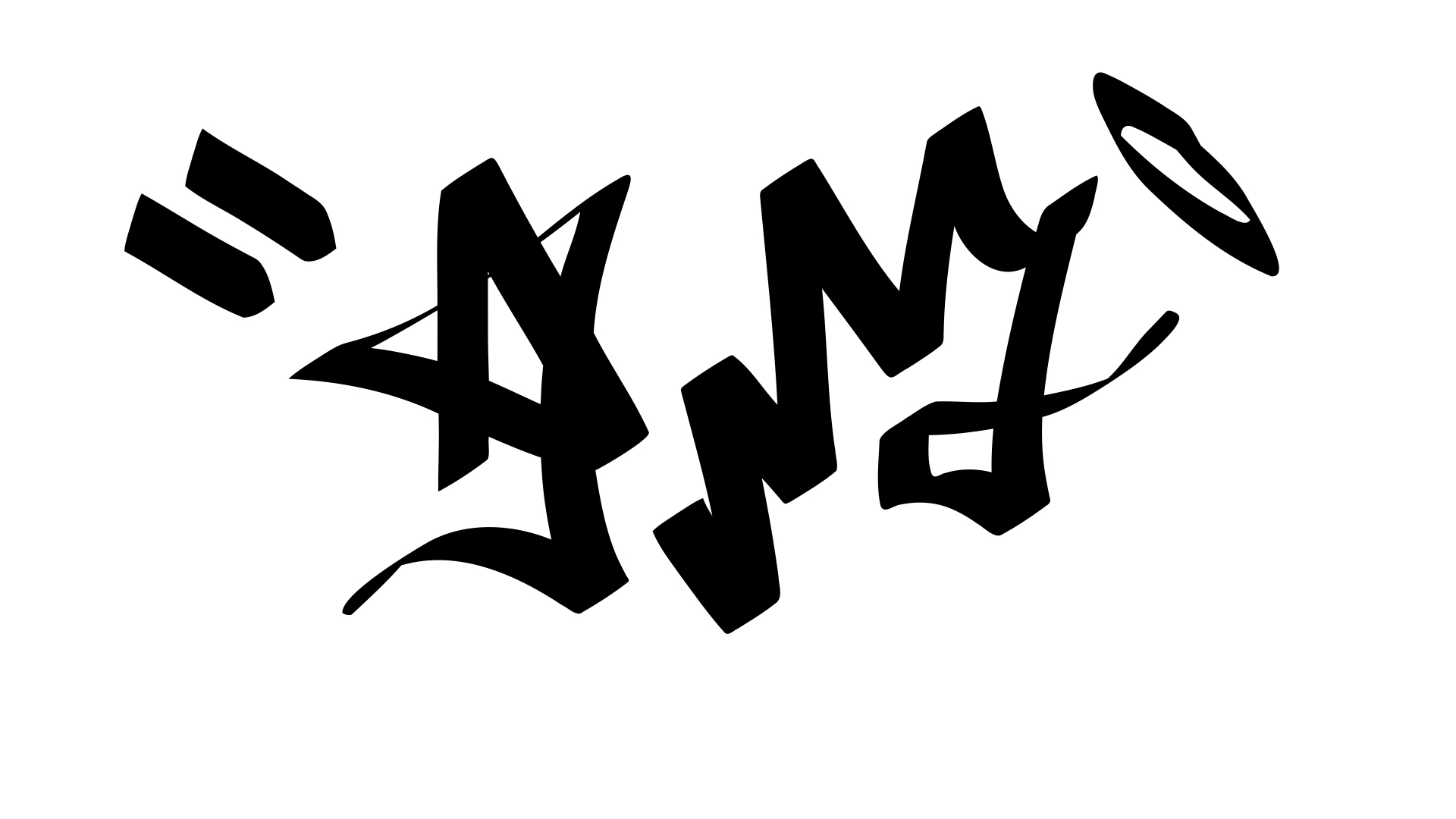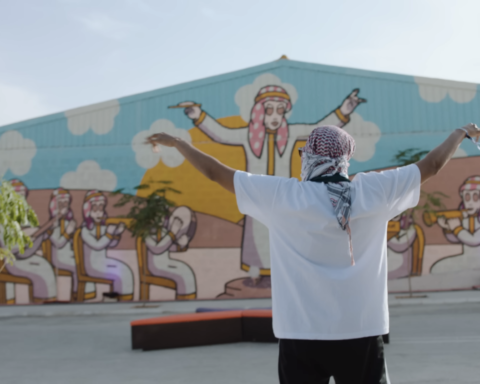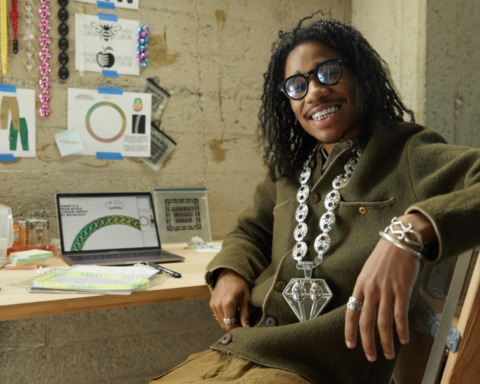Jenna Crook had never considered pursuing a career as a tattoo artist until one evening in 2014. Something snapped when she realized how intricately detailed her self-applied tattoos were after meeting a new buddy on Toronto Island.
“I grew up thinking of tattoos essentially as one style of art — one I didn’t personally like, so I paid little attention to it,” Crook explains in conversation with local website. “I got my first tattoo from [them] that week, and the week after that I started tattooing myself. I was obsessed.”
Later, Crook invested in her own tattoo machine and took a risk she never imagined: she started working as a tattoo artist full-time. Her tattoo designs use a messier, more freewheeling style that departs from the conventional notion of what constitutes a “good” tattoo.
Particularly among members of Generation Z, this novel tattoo design style has grown in popularity in Montreal and Toronto. It introduces an unconventional and freer style of tattoo design while rejecting the “strict standards and ideals” of the tattoo scene. One of the artists pushing the boundaries and making room for a fresh aesthetic to emerge on the landscape is Crook.

She uses sketch-like graphics and plays with the obscurity of images through shade and exaggerated line work. Known online as notcoolneverwas, she challenges the classicism of American heritage in her own creative style. She now has more than 45k Instagram followers because of her tattoos.
“Instagram in particular… gave access to a free image-based marketing platform and a worldwide audience,” she says. “As far as style, I think a lot of the ‘newer’ styles we’ve seen enter tattooing are things we’ve already seen in the art [and] design world for years.”
Crook’s artwork is a playful fusion of letting herself draw “badly” and enjoying the things she produces. She also creates tattoos with unreadable language and uses gothic typography, such as Old English. She has been influenced by classical artworks, online advertisements, and occasionally even a “junk shot” she took on the street.
“I play first, obsess later,” she says about her process of creating work. “Sometimes I fail, but that’s the goal. These days I can play with this even more because I’m less limited by my tattoo abilities.”
View this post on Instagram
How people get tattoos has changed as a result of social media. Emerik, a tattoo artist from Montreal who goes by the Instagram handle dirtyl00ks, claims that social media is to blame for the growth in popularity of the messy freeform tattooing technique. He claims that as messier tattoos come out of the underground tattoo community, the remixing of traditional designs encourages clients to explore a style they’re not used to seeing.
“Before the arrival of those platforms, there were only a handful of different styles going around that you would have to find through magazines or actually going to the shop to look at the flash on the wall,” he says. “Now a lot more people are exposed to it and are interested in getting some work done in those styles because they haven’t seen anything similar.”
Emerik’s tattooing style, which he refers to as “bathroom stall drawings,” deconstructs traditionalist patterns and typography in a messy and sketch-like manner.
“I want my drawing sheet to look like those fake tattoo sticker sheets I used to have so much fun with as a kid,” he says. “I draw and tattoo really fast. My drawings are done on the first shot almost, without the need of the eraser.”
View this post on Instagram
While Emerik does some bespoke work, the majority of his work consists of flash tattoos, in which customers select designs based on vintage brand signage, records, or anything else that inspires him on a daily basis, such as using elements of the Old West in his work.
“Tattooing has been around forever. A lot of the different styles going around are often remixes of older stuff; we get inspired by the history around us and give it our own touch.”
It is certain that deviating from the standard will draw some criticism. Emerik claims he gets critical remarks from Instagram users who believe tattoos must adhere to a tidy standard with realistic artwork.
“I get a lot of hate from older white men who have been tattooing for a lot of years…taking time out of their day to write mean [comments],” he says. In a recent incident, a tattoo artist in New Jersey mocked his work by making a fake flash sheet in Emerik’s style.
“I normally just respond with a nonsense answer that confuses them,” says Emerik. “It seems like people don’t care for paintings or other art forms [being experimental], but as soon as it’s tattoos it’s got to follow a certain cleanliness and commercial image.”
Crook shares a similar sentiment, saying that artists need to be more accepting of newer styles. “It’s always funny to me how close-minded artists can be,” says Crook. “As long as a tattoo is done safely and consensually, I don’t see why the rest shouldn’t be between the tattooer and the client.”
A more angular cyber look has also become more popular with this fashion. Although the designs of these two types would appear to be at odds with one another, their emphasis on nonconformist aesthetics has led to their continued association. Messier, more frivolous tattoos on clients frequently have gothic-cyber designs paired with them. People tend to choose both designs because of their complementary obscurity and distinctiveness.
View this post on Instagram
In Montreal, gothic sigilism is pervasive. The design has become a well-liked subset of the city’s tattoo scene thanks to its sharp lines, wing-like characteristics, and detailed cyber-esque details. Céleste Bonnier, a designer who posts under the handle underyourskin x_ on Instagram, heavily draws inspiration from human anatomy when creating her designs. The Montreal-based artist’s aesthetic has changed over the years, but lately she’s been drawn to ornamental tribal patterns.
“I think people take it more and more like art on them [rather] than like, a signifier of something they are related to,” she says. She attributes this to styles of tattooing that were popular in the 2000s coming back into fashion. Bonnier says the current trend of tattoo designs and styles are inspired by other styles that already exist and are “reshaped.”
Not only are these motifs popular in Montreal and Toronto, but also in Brussels, Berlin, and New York, thanks to significant tattoo cultures. Most artists regularly travel and work abroad as part of their line of work.
“It’s a big part of the job if you want it,” says Emerik. “I go work in New York, Los Angeles, Toronto pretty often. I’ve worked in Europe for a while before also; you meet a lot of inspiring artists and new clients.”
Chicago-based Rene Shin, also known online as fancycrotch, has tattoos all across North America and has resided in both Toronto and Montreal. In contrast to Toronto, the tattoo scene in Montreal, according to Shin, has allowed for a wider variety of tattooing styles.
“I think Toronto is super into detail, like feminine and fine line work,” she says. She noticed, after apprenticing in Korea, that a lot of Toronto’s influence stemmed from Korean artists’ tattooing style. “There are so many artists who do detailed work that have learnt from Korean tattoo artists.”
View this post on Instagram
Shin began her tattooing business at the age of 20 after losing her work during the pandemic. She defines her art as neo-tribal, experimenting with chains, symmetry, and dark gothic themes. Shin has been scheduled and traveling from North America to Europe ever since her work started to gain attention.
Shin views Montreal as being more unconventional and experimental. The combination of North American and European influences makes it significantly different from Toronto’s fashion. Emerik had the same sentiment, highlighting how expensive Toronto is.
“The scene in Montreal is a bit more experimental and weird, while Toronto tends to be classic and cleaner,” says Emerik. “You can experiment a lot more with art projects, restart over if it doesn’t work because you don’t have the constant need to hustle to pay your expensive rent.”
Given the continued popularity of these trends in the tattooing scenes of Montreal and Toronto, Crook says she is eager to see what the upcoming generation of artists will come up with because of how cyclical tattoo designs are.
“There’s always been styles that entered tattooing that were not welcome at first, just as there were in fine art. Newer artists come in challenging and rejecting some of the rigid ideals set before them,” says Crook. “I can’t wait to see what style the kids bring in years from now.”











